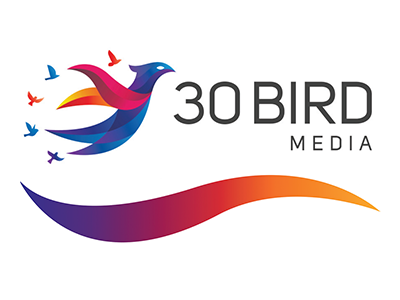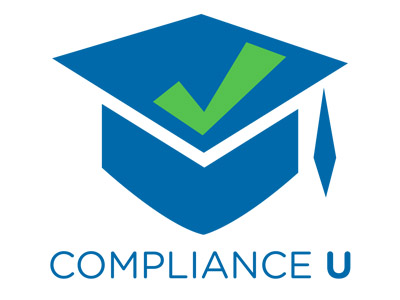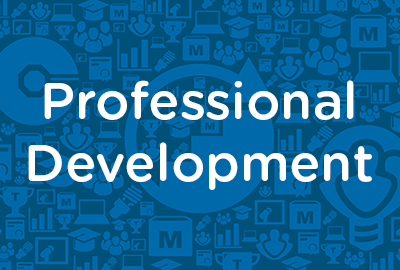 |
Safe Apparatus Response |
0.50 |
More than four thousand firefighters are injured each year in the United States while responding to and returning from emergency scenes. Response injuries account for roughly 7% of all fireground related injuries, however, they accounted for 29% of the line of duty deaths in 2020. This statistic exhibits the severity potential of unsafe apparatus response to and from emergencies. This course will identify hazards and risks associated with apparatus response and describe methods for reducing those risks. |
 |
CompTIA Linux+ XK0-005 Exam Prep |
1.00 |
Exam Prep to accompany 30 Bird's CompTIA Linux+ Certification - Exam XK0-005 course. |
 |
Safety Communication and Training Techniques |
1.50 |
This course covers certain safety and logistics measures for the workplace. This includes topics like different types of safety training, creating safety programs with different learners in mind, and how to use various types of media to communicate objectives. |
 |
Basic Health & Safety Requirements for Certification |
6.00 |
Best practices and standards for health and safety are the foundation of quality child care. Meeting the basic health and safety needs of all children sets the stage for positive child outcomes.
This health and safety orientation module provides an overview of the basic health and safety requirements and best practices in nine of the topic areas outlined in the Child Care and Development Block Grant (CCDBG) Reauthorization of 2015. The topics are as follows:
Safe spaces; Transportation safety; Handling and storage of hazardous materials; Emergency preparedness; Prevention and control of infectious disease; Food and allergic reactions and how to respond; Administration of medication; Shaken baby syndrome/abusive head trauma; Safe sleep and SUIDS prevention.
This course is designed to meet your professional development needs. It can be taken as a stand-alone learning event, or as part of a broader early childhood education curriculum. In addition to state child care regulations, there may be other health and safety measures required by your municipality, township, or county. Check with county or local offices for information on local health and safety requirements. |
 |
Command and Control Introduction #1432 (Instructor Guide) |
1.00 |
This is the Instructor Guide for Lesson #1432 Introduction to Incident Command and Control. This Instructor Guide is intended to prepare a lead instructor to deliver this course curriculum. Included in this guide is a review of lesson content, and all required lesson materials. The lead instructor must pass this instructor guide course with a minimum score of 80% to receive the course materials for this lesson. |
 |
Observation and Assessment of the Learning Environment (CDA 7) |
2.00 |
Research finds that the quality of a child’s early learning environment has a significant impact on his well-being and ability to learn. This course focuses on two significant aspects of environmental quality: the relationships and rich interactions that happen in the classroom, and the physical setting and learning materials. Special emphasis is placed on observation and assessment of the learning environment to make improvements and support positive outcomes for children. The course covers how professionals who work with young children can use observation and assessment as a way to support children’s development (social, emotional, cognitive, physical, and approaches to learning), inform teaching practices, enhance interactions with children, and plan activities for young children. This course is designed to be part of a Child Development Associate (CDA) Credential™ curriculum, and covers CDA subject area 7: Observation and Assessment. It can also be taken as a stand-alone learning event or as part of a broader early childhood education curriculum. |
 |
Presentation Methods and Debriefing Activities |
2.00 |
There is no "one size fits all" approach to working with children and youth, and this is especially true when it comes to how we present and debrief activities. During this course, participants will understand the importance of the delivery and debriefing of an activity to help children and youth make meaning, as well as some specific methods that can be incorporated into the program right away. |
 |
Understanding the Behavior of Children and Youth |
2.00 |
The development of children and youth can cause them to behave in ways that can be trying for even the most knowledgeable and experienced staff. When staff understands what is driving the behavior, they can help to guide and encourage acceptable behaviors. This course will provide participants with the knowledge and skills necessary to prevent unwanted behavior by meeting the needs of children and youth before they act out. |
 |
Preventing Sexual Harassment and Understanding California Law |
0.50 |
This course will teach California employees how to recognize sexual harassment, defines the rights and responsibilities of employers and employees, and provides an overview of the legal remedies available in sexual harassment lawsuits. |
 |
Job Applications |
1.00 |
In this course, you will learn the basics of completing a job application, including how to choose and secure references, tips for completing applications online, strategies for dealing with background checks with a criminal record, and more. |
 |
Understanding Cognitive Behavioral Therapy |
1.00 |
This course covers the fundamental principles of cognitive behavioral therapy. It explores how educators can apply them to assist students with cognitive distortions or specific disorders that may affect them. It is just one out of many educational professional courses we offer. This course will help you develop new knowledge about students and will give you specific resources to help you in the classroom.
Please note, educators are not trained psychologists. This course is meant to serve as an introduction to cognitive behavioral therapy concepts so they understand what resources are available to their students. For true cognitive behavioral therapy, students should consult a registered psychologist. |
 |
Cross-Cultural Business Communication: Communicating Across Cultures (Instructor Guide) |
1.00 |
When communicating across cultures, you could come across a number of barriers. In addition to language barriers, there might be more subtle obstacles, such as cultural biases and conflicting communication styles. Building relationships with people of other cultures will provide you with the incentive to work through those barriers and achieve effective communication.
In this course you will learn to: establish rapport and build trust, and listen well and provide positive and constructive feedback.
This Instructor's Edition of this course includes notes and suggestions to assist you in presenting the material, whether in an in-person classroom setting, or as an instructor-led online or distance-learning course. It also provides you with the answers to questions found in mid-lesson activities, as well as in the quiz that concludes the course. |
 |
Searching Online |
0.75 |
This course covers the fundamentals of searching online. From using basic features, such as the homepage and address bar, to using "advanced search" to find very specific information, this course will cover it all. |
 |
Zoonotic Disease and Biosecurity |
2.00 |
Every year, zoological organizations are faced by new challenges in maintaining the health of their animal collections. Zoonosis, or disease that can be spread between species, forms one of the greatest threats to the safety of animals, guests, and keepers. Using a case study from a zoonotic disease concern at the San Diego Zoo, you will learn the basics of zoonotic disease identification and prevention, including standard record keeping, best practices, health and safety protocols for keepers, and the understanding of how disease can be spread. |
 |
School-Age Care as a Family Service: Emphasis on Planning Opportunities for Family Involvement |
2.00 |
The foundation for getting parents involved in school-age programs is to keep parents well informed about what is happening in the program. Quality programs also provide parents with opportunities to make suggestions and give feedback on program services through suggestion boxes, feedback forms, and surveys. When parents are encouraged to have input in the program, they develop trust and confidence in the program, and feel a sense of pride and ownership. They are more likely to participate as resourceful partners with program staff when they know their ideas are welcome and valued. Finally, because parents are all different from each other, it's important to provide many different opportunities for them to connect with the program. Staff in quality school-age programs recognize that all parents don't have to be involved in the same way. |
 |
Elder Abuse Prevention |
1.00 |
In this course, you will learn about the prevalence of elder abuse and define the scope of this hidden epidemic. You will learn about the different types of abuse, your role in caring for elders, how to recognize signs of abuse, what to do if abuse is suspected, and how to help prevent it.
|
 |
Benefits of Connecting Seniors and Young Children (CDA 3) |
2.00 |
This course equips you with the knowledge and tools to integrate senior adults into childcare and education programs. Discover how this approach benefits children, seniors, your program, and you, enriching lives across generations. |
 |
Guiding School-Age Children in Groups: Supervision and Boundaries |
1.00 |
When large numbers of children are involved in the program, it is challenging to create and deliver school-age program activities that can meet the needs of all children. The key to success is taking a systematic approach to program planning. It is important for staff to understand how to select appropriate activity options and use effective management strategies that make it possible to offer a balanced variety of simultaneous activity options. This understanding will help staff plan and implement a program that effectively supports, nurtures, and guides individual differences and fosters positive interaction among children in groups. |
 |
Hazard Communication Basic |
1.00 |
This course covers the basics when it comes to hazard communication. The topics will range from the Hazard Communication Standard to the labeling of hazardous materials. |
 |
Ground Cover Fires |
1.50 |
This course is an introductory level course that introduces the basic concepts of fighting fires that involve natural ground cover. This course describes fire behaviors associated with ground cover fires, identifies the types of equipment as well as methods used to combat these fires. The lesson also identifies specific hazards associated with ground cover fires and describes methods for mitigating the risk of those hazards. |
 |
Paraprofessional Math Skills 1: Number Sense and Basic Algebra |
3.00 |
This course covers Paraprofessional Math Skills: Number Sense and Basic Algebra. It is just one out of three Paraprofessional Math Skills courses, and one out of eight ParaPro prep courses that will prepare you on K-12 topics. This course will help you develop your knowledge of these mathematical concepts and help you apply them to abstract and real-life situations. After taking these prep courses, you should be prepared for the ETS ParaPro Assessment. This course can be taken as a stand-alone learning event, as part of a broader paraprofessional curriculum, or in preparation for the ParaPro Assessment.
After completing this course, you will be able to:
Evaluate basic addition, subtraction, multiplication, and division expressions with whole numbers, fractions, and decimals
Recognize multiplication as repeated addition and division as repeated subtraction
Interpret mathematical symbols
Understand basic mathematical terms
Recognize the position of numbers in relation to each other
Understand equivalent forms of a number
Understand place value for whole numbers and decimal numbers
Compute percentages
Understand basic concepts of exponents
Use the order of operations to evaluate math expressions
Use mental math and solve problems by estimation
Solve word problems
Solve one-step, single-variable linear equations
Understand the sequence of numbers |
 |
GED: Math - Unit 5: Coordinate Plane |
1.00 |
Welcome to Unit 5: Coordinate Plane. If you've ever graphed points, or read a graph, you've worked with the coordinate plane. In this unit, we'll learn about points, the lines that connect them, and the equations used to create them. |
 |
Multi-Age Learning and Interaction (CDA 1 & 5) |
2.00 |
This course explores the dynamic world of mixed-age childcare groupings. Discover how these environments expand learning opportunities for children of all stages, fostering social, emotional, and cognitive development. Delve into the benefits for both children and adults, including a deeper understanding of individual learners and intentional support facilitated through multi-age interactions. Navigate the advantages, challenges, and unique considerations of working with mixed-age groups, equipping yourself to create a thriving learning space for all. |
 |
Environmental Systems |
2.00 |
Many of the animals exhibited in zoos and aquariums have very specific environmental requirements that must be met in order to support the life form and better ensure its welfare. This course will explore the unique biological, physiological, and welfare requirements of several varied types of animals; their unique requirements; and the implications for the provision of these requirements. |
 |
Basic Building Construction (NYS04) |
1.00 |
This is a basic lesson for the introduction or review of building construction for the firefighter. The lesson defines five types of building construction and identifies the risks and hazards associated with fighting fires in these structures. The lesson is evaluated with a final multiple-choice quiz. A grade of 80% or better is required to pass this course. |


























